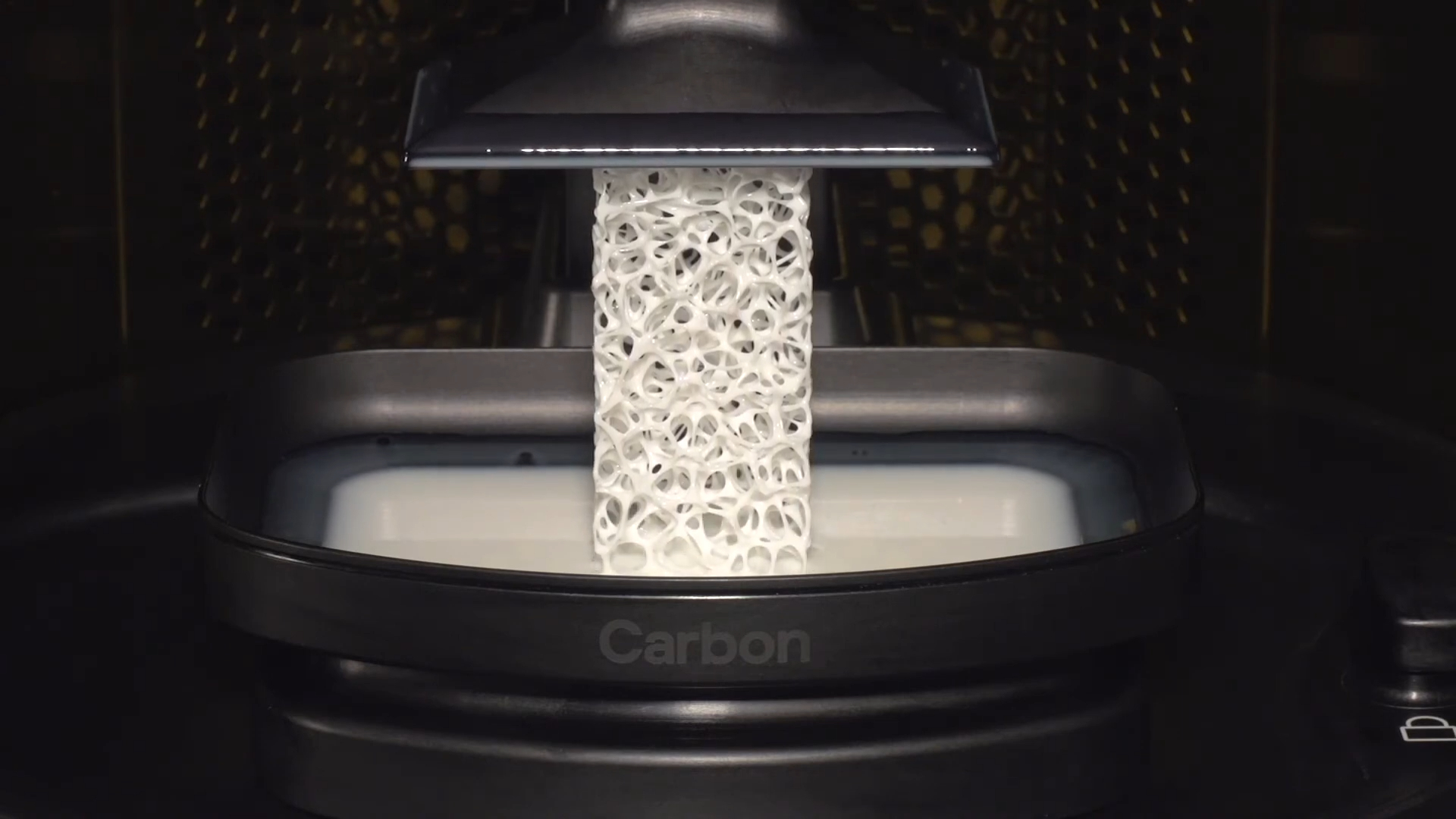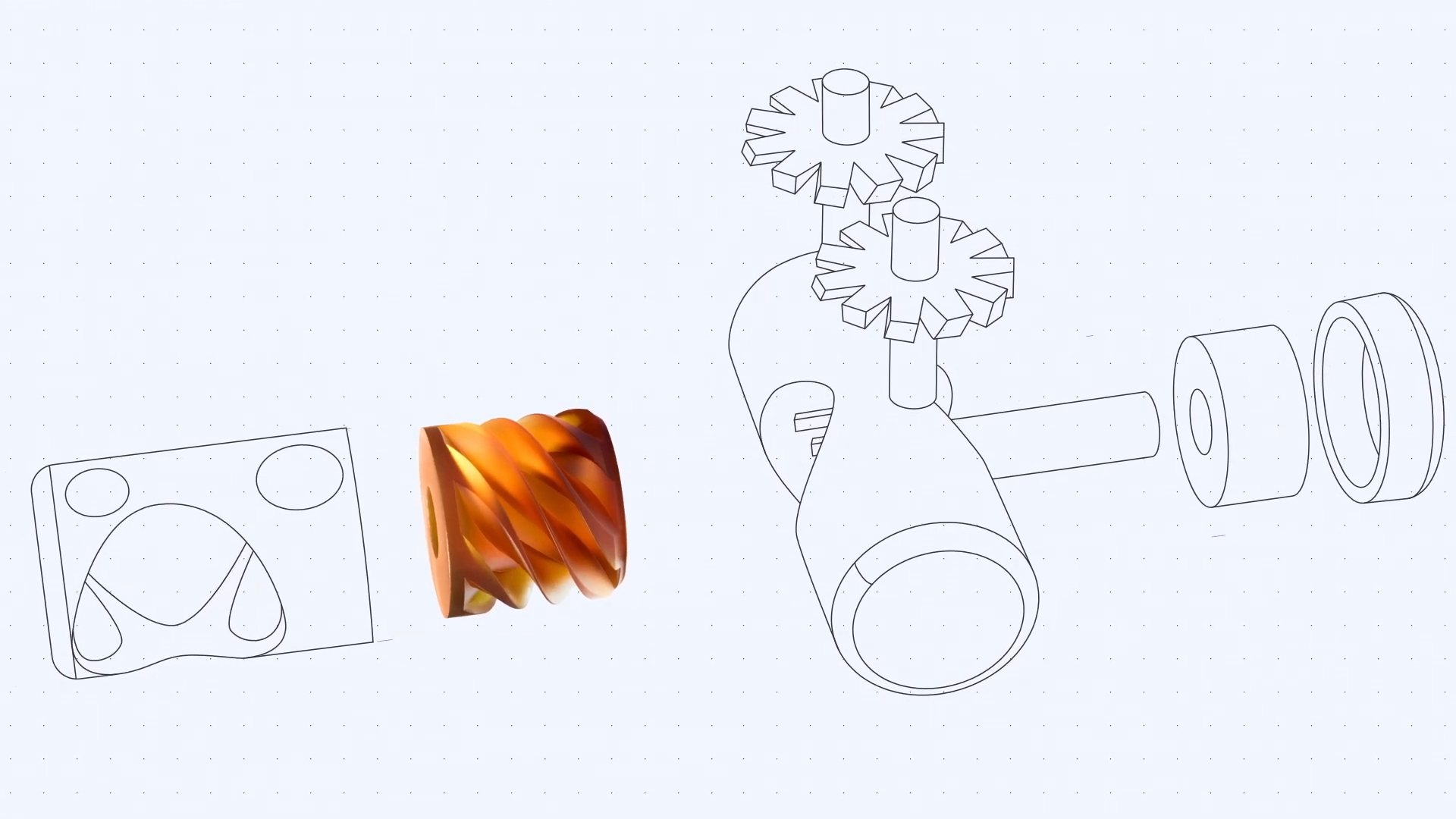Ever wondered how manufacturers create complex parts with the perfect blend of strength and precision? Enter Carbon DLS (Digital Light Synthesis), a groundbreaking 3D printing technology transforming modern manufacturing. Unlike traditional methods, Carbon DLS combines digital light projection with oxygen-permeable optics and programmable resins to create exceptional results.
Through its revolutionary CLIP process, this technology bridges the gap between prototyping and production manufacturing. From automotive parts to medical devices, Carbon DLS isn't just printing differently – it's creating better products. Let's explore how this innovation is reshaping manufacturing possibilities.
Join us for a deep dive into Carbon DLS technology! We'll explore all the essential aspects - from basic operations to material choices, plus the pros and cons of this revolutionary 3D printing method.

What is Carbon DLS?
Carbon Digital Light Synthesis (DLS) represents a groundbreaking leap in 3D printing technology. It combines digital light projection, oxygen-permeable optics, and programmable liquid resins to create high-quality, production-grade parts. This innovative technology sets itself apart by producing components with exceptional durability, precision, and superior surface finish.
How is Carbon DLS Different from Other 3D Printing Methods?
Comparison with Stereolithography (SLA)
Curing Process
Strength Development
Production Speed
Comparison with PolyJet 3D Printing
Material Properties
Surface Quality
Production Efficiency
Comparison with Fused Deposition Modeling (FDM)
Structural Integrity
Detail Resolution
Material Options

How Does Carbon DLS Work?
Carbon DLS employs a sophisticated three-stage process to create high-quality 3D printed parts. Let's break down each component and stage of this innovative technology.
Digital Light Projection System
UV Light Source
Digital Masking
The CLIP Process (Continuous Liquid Interface Production)
Stage 1: Initial Setup
Liquid resin fills the build chamber
Build platform positions at start height
Oxygen-permeable window prepares for projection
Stage 2: Continuous Formation
Dead Zone Creation
Thin oxygen layer (0.001mm thick)
Prevents resin adhesion to window
Enables continuous printing
Build Process
Stage 3: Thermal Curing
Key Process Features
Oxygen-Permeable Optics:
Continuous Production Benefits:
Final Curing Results:
Technical Specifications:
| Process Parameter | Typical Value |
| Dead Zone Thickness | ~0.001mm |
| UV Light Resolution | 0.005" square |
| Build Volume | 7.4" x 4.6" x 12.8" |
| Minimum Wall Thickness | 0.030" |

Materials Used in Carbon DLS 3D Printing
Carbon DLS technology offers diverse material options to meet various manufacturing needs. These materials fall into two main categories: rigid plastics and rubber-like materials.
Rigid Plastics
CE 221 (Cyanate Ester)
Key Properties
Ideal Applications
Fluid manifolds
Compressor components
Chemical handling parts
UMA 90 (Multi-Purpose)
Characteristics
Similar to SLA resins
Multi-color capability
Good surface finish
Best Uses
Manufacturing fixtures
Production jigs
Visual prototypes
EPX 82 (Epoxy)
Features
Glass-like strength
High durability
Impact resistant
Applications
Structural components
Connectors
Load-bearing brackets
Rubber-Like Materials
EPU 40 (Elastomeric Polyurethane)
Properties
High elasticity
Superior tear strength
Excellent energy return
Common Uses
Seals
Vibration dampeners
Flexible components
SIL 30 (Silicone)
Attributes
Biocompatible
Low hardness
High tear resistance
Applications
Medical devices
Wearable products
Skin-contact items
Material Properties Comparison
| Material | Durability | Flexibility | Chemical Resistance | Heat Resistance |
| CE 221 | Excellent | Low | Excellent | High |
| UMA 90 | Good | Moderate | Good | Moderate |
| EPX 82 | Excellent | Low | Good | Good |
| EPU 40 | Good | High | Moderate | Moderate |
| SIL 30 | Moderate | Very High | Good | Good |
Special Features of Carbo DLS
Advantages of Carbon DLS Technology
1. Why Choose Carbon DLS for Complex Designs?
Advanced Geometric Capabilities
Real-World Applications
Footwear midsoles replacement
Automotive component consolidation
Aerospace lightweight parts
Medical device customization
2. Mechanical Properties of Carbon DLS Parts
Isotropic Strength Advantages
Uniform Properties
Performance Metrics
Dual-Curing Benefits
UV Curing Stage
Initial shape formation
Dimensional accuracy
Precise details
Thermal Curing Stage
Activates dormant chemistry
Strengthens molecular bonds
Improves overall durability
3. Surface Finish Quality
Surface Characteristics
Quality Metrics
Glass-like smoothness
Minimal layer lines
Professional appearance
Resolution Capabilities
Size-Based Performance
| Part Size | Resolution | Surface Quality |
| Small (<2") | Ultra-high | Mirror-like |
| Medium (2-6") | High | Excellent |
| Large (>6") | Standard | Professional |
Manufacturing Advantages
Additional Benefits
Production Efficiency
Design Freedom
Consolidated assemblies
Optimized geometries
Functional integration
Quality Assurance
Repeatable results
Predictable properties
Reliable manufacturing

Considerations and Limitations of Carbon DLS
Cost Factors
Initial Investment: Premium equipment, specialized materials, and project setup require substantial upfront capital.
Operating Costs: Proprietary resins and ongoing maintenance drive higher production expenses than traditional methods.
Post-Processing: Additional finishing steps increase labor costs and production time.
Material Limitations
Limited Selection: Only 8 base materials available, restricting design and application options.
Color Options: Minimal color choices in standard materials. Custom coloring requires extra processing.
Material Properties: Restricted range of mechanical characteristics compared to traditional manufacturing.
When to Consider Alternatives
Simple Prototypes: FDM or basic SLA provide faster, more cost-effective solutions for basic testing.
Large Production: SLS or injection molding offer better economies of scale for high volumes.
Budget Projects: Traditional manufacturing methods provide more economical options for:
Basic geometries
Simple mechanical parts
High-volume production
Quick iterations
Time-Sensitive Projects: Standard 3D printing technologies offer faster turnaround for simple designs.
Carbon DLS excels in complex, high-quality parts but may not suit every project. Consider your specific needs, budget, and production volume before choosing this technology.
Applications of Carbon DLS Technology
Current Industry Applications
Automotive Manufacturing: Production of high-performance parts, custom components, and functional prototypes. Enables part consolidation and weight reduction.
Medical Devices: Creates biocompatible instruments, custom surgical tools, and patient-specific implants. Ideal for dental applications and medical-grade components.
Consumer Products: Powers production of premium footwear components, electronics housings, and custom sports equipment. Excels in creating ergonomic designs.
Aerospace Components: Delivers lightweight parts, complex ducting systems, and specialized tooling. Enables design optimization for weight reduction.
Manufacturing Capabilities
Rapid Prototyping: Quick design iterations and functional testing within hours. Provides immediate feedback for design improvements.
Production Scaling: Seamless transition from prototyping to full-scale manufacturing. Enables consistent quality across production runs.
Mass Customization: Creates unique products tailored to individual needs. Powers personalized solutions for various industries.
Success Stories
Adidas Implementation: Revolutionized midsole production through lattice structures. Achieved mass customization in footwear manufacturing.
Medical Applications: Transformed patient-specific device production. Reduced lead times by 60% for custom medical solutions.
Automotive Success: Decreased part count through consolidation. Achieved 40% cost reduction in component manufacturing.
Future Trends
Material Development: Expanding material options and enhancing mechanical properties. Introducing sustainable and bio-based materials.
Technical Progress: Increasing build speeds and volumes. Implementing advanced automation systems.
Industry Evolution: Moving toward digital inventory solutions and localized production. Expanding into new market segments.
Conclusion: Why Choose Carbon DLS for Your Next Project?
Carbon DLS represents a groundbreaking advancement in 3D printing technology. Its unique combination of digital light projection, oxygen-permeable optics, and programmable resins delivers exceptional results for demanding applications. Through its innovative CLIP process, this technology enables the creation of complex geometries previously impossible with traditional manufacturing methods.
While Carbon DLS may involve higher initial costs, its ability to produce high-quality, functional parts makes it an excellent choice for innovative projects demanding superior performance. As this technology continues to revolutionize manufacturing across industries, from automotive to medical devices, it offers unprecedented design freedom and production capabilities. For projects requiring exceptional quality, consistency, and complex geometries, Carbon DLS presents a compelling solution for next-generation manufacturing.
Ready to Transform Your Manufacturing Process?
Take your product development to the next level with MFG's advanced Carbon DLS technology. Whether you need complex prototypes or production-ready parts, our expert team delivers exceptional results.
Reference Sources
Carbon DLS 3D printing Technology
Frequently Asked Questions About Carbon DLS
Q1: What is the minimum wall thickness possible with Carbon DLS?
A: The minimum recommended wall thickness is 0.030" (0.762mm). This ensures structural integrity and proper feature formation during printing.
Q2: How long does the Carbon DLS printing process take?
A: Print times vary by size and complexity. Most parts complete printing within 1-3 hours, plus an additional 2-4 hours for thermal curing in the oven.
Q3: Can Carbon DLS parts be painted or colored?
A: Yes. Carbon DLS parts accept standard painting and coloring processes. However, post-processing for color adds extra time and cost to production.
Q4: What is the maximum build size for Carbon DLS printing?
A: The typical build area is 7.4" x 4.6" x 12.8". Parts exceeding 4" x 4" x 6" require manual review for optimal printing results.
Q5: Are Carbon DLS materials food-safe and biocompatible?
A: Select materials like SIL 30 and RPU 70 are biocompatible and suitable for food contact applications. Each material requires specific certification for intended use.
Q6: How does the cost compare to traditional manufacturing methods?
A: Carbon DLS typically costs more per part for small volumes. However, it becomes cost-effective for complex geometries and medium-sized production runs where tooling costs would be prohibitive.
Q7: What kind of post-processing is required for Carbon DLS parts?
A: Most parts require thermal curing after printing. Additional post-processing depends on the application - from simple support removal to surface finishing for aesthetic parts.



















